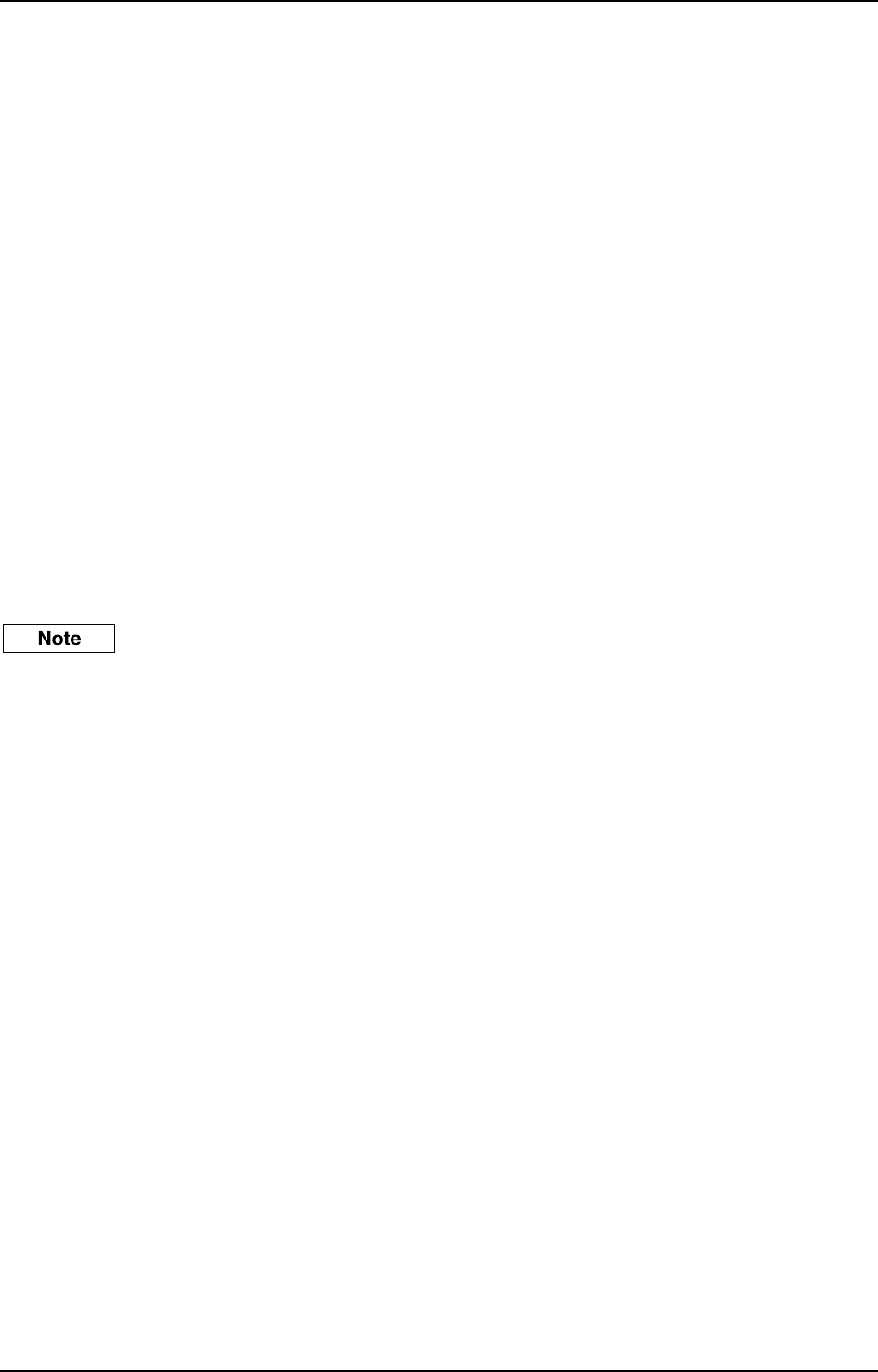
3-4
*RST Reset Command. Sets the instrument functions to the factory default power up
state.
*TST? Self Test Query. Returns a '0' when the VXI interface and processor are operating.
*OPC Operation Complete Command. Sets the Operation Complete bit in the Standard
Event Status Register when execution of the preceding operation is complete.
*OPC? Operation Complete Query. Returns a '1' when the preceding operation has been
completed.
*WAI Wait to Continue Command. Inhibits execution of an overlapped command until
the execution of the preceding operation has been completed.
*TRG Trigger Command. Equivalent to Group Execute Trigger.
*STB? Read Status Byte Query. Returns the value of the Status Byte as an nr1 number (0-
255).
*SRE <nrf> Service Request Enable Command. Sets the Service Request Enable Register.
*SRE? Service Request Enable Query. Returns the value of the Service Request Enable
Register as nr1.
*ESR? Standard Event Status Register Query. Returns the value of the Status Event Status
Register as nr1.
*ESE <nrf> Standard Event Status Enable Command. Sets the Standard Event Enable Register.
*ESE? Standard Event Status Enable Query. Returns the value of the Standard Event
Status Enable Register as nr1.
*CLS Clear Status Command. Clears all the Status Event registers and clears the Erro
r
Queue. Does not affect the Enable Registers.
The IEEE 488.2 Device Clear function only affects the remote functions. The input and
output buffers are cleared and the instrument put into a state to accept new messages.
Earlier versions of IEEE 488.1 put the instrument functions into a defined state, but this is
now performed by the *RST common command.
Device dependent commands
The following list describes the features of the device dependent mnemonics for the instrument
together with simple examples of their use within each major section (Carrier frequency, RF level,
etc.) The root mnemonic is listed first followed by the lower level mnemonics. Each group is
followed by a list of requirements for data type and suffix.
In addition to the normal listen commands the instrument accepts query commands which cause it
to prepare a message which will be sent to the controller when the instrument is next addressed to
talk. For each query an example of a response is given. Where responses are similar for a group of
queries not all are listed. Some queries can produce more than one type of response - an example
of each is usually given.
In the list which follows, the abbreviations <char>, <nrf> and <str> have the following meanings:
<char> = Character Program Data
<nrf> = Decimal Numeric Program Data
<str> = String Program Data
Where the data format is Decimal Numeric Program Data, the value may be expressed as a signed
or unsigned number in any of the following formats:
nr1: Decimal integer, e.g. 1234 or -567
nr2: Floating point number, e.g. 1.234 or -56.789
nr3: Floating point number with exponent, e.g. 1.2345E5 or -12.47E-8


















